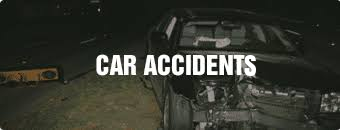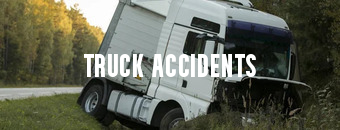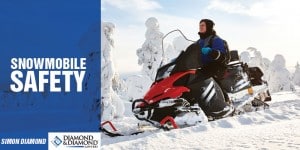#AskSimonDiamond
Snowmobiles are a popular form of winter recreation for individuals and families throughout Ontario. They are also a necessity in remote regions where heavy snows make other forms of transportation impractical, particular in an emergency. The popularity of snowmobiles comes at a price when people fail to operate them safely. Media outlets reported a sharp increase in deaths attributed to snowmobile accidents. Here are some snowmobile safety tips you can use to avoid accidents and injuries this winter.
Obey licence and registration requirements
You must be at least 12 years of age to legally operate a snowmobile and possess one of the following licences:
- Driver’s licence
- Motorized snow vehicle operator’s licence
- Snowmobile operator’s licence from another jurisdiction
The snowmobile must be registered with the Ontario Ministry of Transportation, and it must be insured. You must have the following documents with you when operating a snowmobile:
- Licence
- Registration permit
- Proof of insurance
You could be fined up to $1,000 if you cannot produce the required documents when asked by a police officer or conservation officer.
Wear a helmet and eye protection
Accidents involving snowmobiles can cause serious injuries or death to drivers and passengers. Common types of accidents include:
- Collisions with trees and other objects
- Collisions with other snowmobiles or motor vehicles
- Falling from a snowmobile
- Breaking through ice-covered lakes and rivers
- Snowmobile rollovers
Head injuries, the leading cause of death in snowmobile accidents, can be prevented by wearing a helmet. Helmets should meet the same protection standards as required for motorcycle helmets and should be worn by drivers and passengers with the chin straps fastened securely.
The risk of striking a branch or having ice, twigs or other debris blown into your face is always present when operating a snowmobile. Goggles or a full- or half-face shield similar to those worn by motorcycle riders protect your eyes from injury. Eye protection should be shatterproof. Getting goggles or a face shield with a tint offers protection against the sun and glare coming off the snow.
Properly equip yourself and your snowmobile
It might be a bright, sunny day with mild winter temperatures when you head out on the trails, but the weather conditions can quickly deteriorate. Wear clothing that is waterproof and well-insulated. Boots should have rubber soles that will not cause your feet to slip off a wet or icy snowmobile.
Always carry a cellphone, but keep in mind that you might not have service in remote areas. It is essential that you let someone know where you are going and the time you expect to return, so they can alert authorities in the event you do not return.
Some other precautions to take before heading out on your snowmobile include:
- Always carry a first-aid kit
- Carry an emergency repair kit with tools, spark plugs, drive belts and fan belts
- Mount a brightly coloured flag on an antenna rod on the rear of your snowmobile to increase visibility
- Keep headlights and tail lights on to make your machine visible to other operators
- Do not go out alone
- Do not drink alcohol or use drugs while driving a snowmobile
Drivers should avoid railroad tracks, highways and roads, and locations where there are hikers or skiers. Unless you are an experienced driver, avoid ungroomed trails
When you need a personal injury lawyer
The personal injury lawyers at Diamond & Diamond have years of experience successfully handling compensation claims for people injured in snowmobile accidents. Contact our 24/7 injury hotline at 1-800-567-HURT or visit our website to speak to someone now about your claim. Consultations are free, and we have offices located throughout Ontario.














